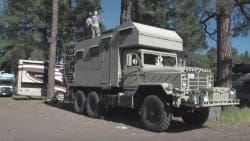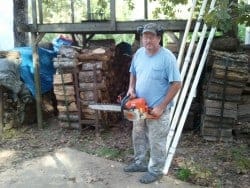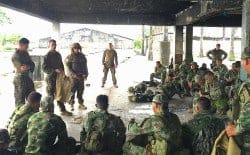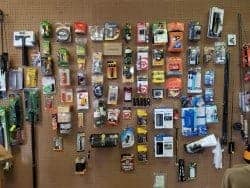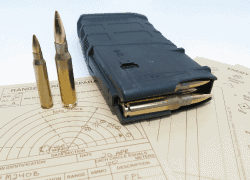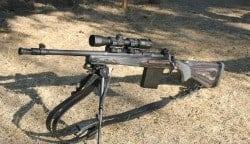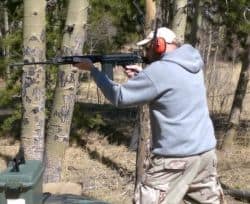Being successful at prepping is a lot more difficult than most people think. In fact, the failure rate for fully
However, if you elect to strike upon the path to preparing for disasters and SHTFs at any level, there are some tasks that must be accomplished to be reasonably ready for any threat. As you begin the process, here are ten areas of concern that could very easily bog you down. You need to know these up front to fully accept the challenge of prepping.
SKIP AHEAD
1. Failure to Prep
Remember Harvey, Irma, and Nate? Nice sounding group, like people you might have over for a backyard
You cannot reasonably expect to withstand a storm or any SHTF unless you have prepared to do so. That means a commitment to prepping at a most basic level. If you sit on the fence forever, you are likely to die there. So, if you never elect to begin the process, you are a failure to start with. But, of course, that can be easily reversed by stepping up to the plate.
2. Fail to Plan
Ok, you bit the bullet, but not all the way through. In your mind, you wanted to start a prepping process for you
Prep planning is really quite simple and indeed can be a fun and challenging trial. First, buy a basic how-to book. Pick a basic one that would seem to cover all the basic bases. It might take a couple volumes or more. These works will get you to thinking about all the steps involved in prepping for a bug in or out, or other SHTF scenarios.
Naturally continue to read the article posts here at SurvivalCache.com and our sister site at SHTFBlog.com. There is a wealth of common sense advice here at both the elementary and advanced levels. Check out the sidebars, too for supplies and gear to purchase at Forge Survival Supply.
Start a prepping notebook. Build sections or folders containing ideas, plans, do-lists, gear needs, supply needs, and everything else. This notebook should become your prepper’s owner’s manual. Prepping is a lifelong process, so kick start that baby now.
3. Fail to Supply
Many wannabe preppers I have advised simply fail to initiate the process by stocking up on all the essentials they
Again, build your needs lists and little by little as you can afford it, start to create a survival cache of supplies to hold you over. Go for water, food, medical, and security core supplies. Collect them, rotate them by use, and be ready.
Also Read: 8 Mistakes of Wilderness Survival
4. Fail to Gear Up
Just as with the life supplies mentioned above, there will be a number of vital hardware items needed too. This
You may need all kinds of mechanical tools to fix stuff. This includes typical mechanics tools from screwdrivers to wrenches. You may need carpentry tools to build things or repair stuff around the homestead. You may need at least one gas powered electric generator to run drills or saws.
Gearing up can be a slow process and an expensive one. All your tool acquisitions do not have to be new ones. Think about garage and yard sales, pawn shops, and other ways to pick up some items without having to pay retail prices. Take small bites on this one, but keep eating away at the lists.
5. Failure to Become Weaponized
Shocking to some but not others, the idea of buying guns, having guns, and using guns is not particularly
Push comes to shove you cannot eat a gun. Unless you intend to turn rogue and take supplies from others, survival weapons are primarily intended for defense measures. You want to be able to protect yourself and your family from external threats to your life. This requires more than a Bible and a pitch fork. It takes a gun.
Related: Top 10 Skills for the Advanced Prepper
Do some reading, ask around, visit some gun shops or gun shows, and shooting ranges. Do a lot of research and don’t get talked into anything. To start all you will need is a basic handgun, revolver or pistol, a good 12-gauge (or 20) shotgun, and a defensive rifle. The later can be the last to acquire if funding is tight. There are entire books on this subject so buy one, even my own, Basic Prepping Essentials-Weapons to start out.
6. Failure to Assess Threats
This is a public awareness aspect and the initiative to stay tuned into the world around you. This includes across
7. Failure to Train
This not only or just includes the security aspects of self-protection, but learning to do all the tasks required to survive. For sure learn to handle, shoot and maintain your stash of firearms, but how to hunt and clean wild game. Know how to start a fire under all kinds of circumstances. Learn to cook over an open campfire and to set up an emergency camp.
Most of us preppers fall very short in this area. We have a lot of stuff, but can we use it all and under the stress of an emergency? You better know. Sign up for training programs in all sorts of areas like carpentry, auto mechanics, small engine repair, plumbing, sewing, gardening, hiking, camping, shooting, and much more. Don’t forget first aid and medical skills training, too.
8. Fail to Map a Bug Out
If a hurricane is 48 hours out from your location, do you have the faintest idea where to go? Do you know the
Related: Top 10 Guns for Survival
9. Failing to Practice
Practice is different from training. First you learn how to do something correctly, then you put it into use by continuing to practice the skills on a regular basis. If you took a golfing lesson then never played golf again, what good did it do? The same with any other skill you acquire from shooting to running a table saw, or operating a welding machine.
10. Failure to Secure a Bug In
While a lot of preppers gear their planning toward an escape, which is
A Bug In requires additional work on security and lock down measures to withstand a strong storm or an assault threat if it comes to that. Contingencies have to be in place for water supplies to drink, cook, and for plumbing. An auxiliary power generator may be needed. Partnering with neighbors might be an option, too, but all that has to be worked out in advance.
Also Read: 10 Tips for Concealed Carry
While the thought of failure at anything is not a pleasant idea, without proper planning and initiative to supply, gear up, train and practice, it is a serious factor of reality to consider. But, it does not have to be. The secret is to get engaged as soon as possible and keep grinding away at your plan and readiness.


